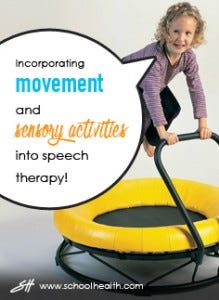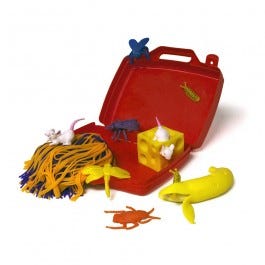For Many Children, School is the Primary Provider of Health Care Screenings
- Jul 14, 2021
- 0 Comments


For many children, school is the primary provider of health care screenings
The pandemic not only hampered learning, but for many disadvantaged students, also limited essential health services.
Though this fall may provide something that feels similar to a typical back-to-school routine, for many, it’s about much more than sitting in a classroom or having lunch with friends. For some children in the United States, school is the only setting where they receive consistent access to health care services - especially for underprivileged and rural households. According to the School-Based Health Alliance, more than 70% of students ages 12 to 18 in schools with clinics receive age-appropriate screenings and care for important childhood issues. Because of this, whether or not they realize it, many school employees serve as frontline healthcare workers.
School nurses often perform screenings to detect key health issues that may prevent children from excelling in the classroom. These include hearing and vision problems, as well as chronic conditions like asthma, scoliosis, or diabetes, and sometimes even dental issues. All of these conditions can create pain or distraction for students who may already be struggling to learn. Teachers are also typically among the first to recognize these challenges in their classroom students - and detection is the first step to creating a better quality of life (and educational environment) for these young students.
Health care commonly starts on campus
When it comes to pediatric and adolescent health services, a reality check is in order. Many primary care providers, including pediatricians, only offer appointments during weekdays, which can be a challenge for working parents. Lack of transportation is also an issue for many U.S. families, and for those in rural areas, doctor’s appointments can require overnight stays and substantial time away from home and school. School-based health centers (SBHCs) are uniquely positioned to provide more comprehensive medical services to school-age youth. This type of care delivery is on the rise, but still only present in about 2,300 US K-12 campuses, leaving critical care delivery and important screenings to be provided in designated classrooms or small on-campus nurse’s offices.
Below are a few interesting statistics around health care delivery in a school setting:
●The Department of Health and Human Services estimates that 18 million children and adolescents have special health care needs or a chronic illness.
●While only 16% of adolescents receive any sort of mental health services, a startling 70-80% of those services are delivered in a school setting.
●Research has shown that 10% to 25% of childhood injuries (the leading cause of death and disability among children) occur while they are in school. And, acute episodes of chronic conditions such as asthma attacks, epileptic seizures, and cardiac problems can happen at any time, but are often managed by on-campus health professionals.
Protecting respiratory health is key in returning to indoor instruction
Our education system often functions as both a healthcare and social service provider, and staff do their best to make sure no student is slipping through the cracks. The COVID-19 pandemic completely eliminated on-campus learning, and for a substantial period of time, created a barrier not just to education, but to the health and safety of many students. School districts and state programs did their best to get meals to students who needed them - but healthcare provision was essentially halted. Now that students are returning to the classroom for the upcoming school year, school systems must do everything in their power to resume health services that protect quality of life for students and allow for optimum education delivery.
For rural and underprivileged populations, respiratory problems go beyond COVID complications. Studies have shown that complicating factors like wildfire seasons (in rural areas) and air pollution (typically higher in lower-income neighborhoods) can dramatically reduce lung health and immune functions. These challenges existed pre-pandemic, but as we return to traditional in-person learning settings, educational settings and school-based healthcare delivery must both consider the ongoing need for safe indoor air quality. This is especially a concern for smaller spaces where airborne pathogen transmission can more easily occur between students, staff, or healthcare professionals.
Between COVID, allergy/flu seasons, and ever-present airborne pollutants, providing students and staff with pure, clean air is an important step in delivering safe and effective care in the school setting. To help, take advantage of products like the Celios G200 Advanced Air Purifier - equipped with one of the few filters on the market capable of capturing the SARS-CoV-2 virus.
Educators and their partners share a responsibility to do all we can to protect our students. As a nation, it’s our responsibility to recognize the invaluable role that our education system plays in keeping children safe. The ability to safely participate in an in-person learning environment is about far more than just academic success - for a large percentage of our country’s youth, it is quite literally the foundation for their health and well-being.


 by Andrea Simpson, MS, CCC-A/SLP
by Andrea Simpson, MS, CCC-A/SLP Use of
Use of  The increasing square footage of schools can make determining how many automated external defibrillators (AEDs) and where to strategically place them seem like an overwhelming task. But it is a necessary task to ensure the best response in the event of sudden cardiac arrest (SCA). If you need help determining the best number and placement of AEDs in your school,
The increasing square footage of schools can make determining how many automated external defibrillators (AEDs) and where to strategically place them seem like an overwhelming task. But it is a necessary task to ensure the best response in the event of sudden cardiac arrest (SCA). If you need help determining the best number and placement of AEDs in your school, 

 But a 100thbirthday, that is a cause for ceremonial jubilee! I was honored to attend the 100th birthday celebration for occupational therapy at the American Occupational Therapy Association (AOTA) Conference this past weekend in Philadelphia. It was an amazing time that highlighted the role occupational therapy has played in our lives during the past millennium.
But a 100thbirthday, that is a cause for ceremonial jubilee! I was honored to attend the 100th birthday celebration for occupational therapy at the American Occupational Therapy Association (AOTA) Conference this past weekend in Philadelphia. It was an amazing time that highlighted the role occupational therapy has played in our lives during the past millennium.
 Another kit that fascinated me was the
Another kit that fascinated me was the 
 Any birthday is a cause for celebration. But a 100th birthday, that is a cause for ceremonial jubilee! I was honored to attend the 100th birthday celebration for occupational therapy at the American Occupational Therapy Association (AOTA) Conference this past weekend in Philadelphia. It was an amazing time that highlighted the role occupational therapy has played in our lives during the past millennium.
Any birthday is a cause for celebration. But a 100th birthday, that is a cause for ceremonial jubilee! I was honored to attend the 100th birthday celebration for occupational therapy at the American Occupational Therapy Association (AOTA) Conference this past weekend in Philadelphia. It was an amazing time that highlighted the role occupational therapy has played in our lives during the past millennium. I was amazed at the
I was amazed at the  Another kit that fascinated me was the
Another kit that fascinated me was the  The last kit I want to speak of here is the
The last kit I want to speak of here is the  There were many more amazing insights taken away from this conference. However, those are for another blog! I do have to say that the prototype version of the new
There were many more amazing insights taken away from this conference. However, those are for another blog! I do have to say that the prototype version of the new 


 and adults!
and adults!

 Have you ever been frustrated that items slip out of reach or move around when you need them to stay put? The easy-to-clean, light-weight and flexible
Have you ever been frustrated that items slip out of reach or move around when you need them to stay put? The easy-to-clean, light-weight and flexible 